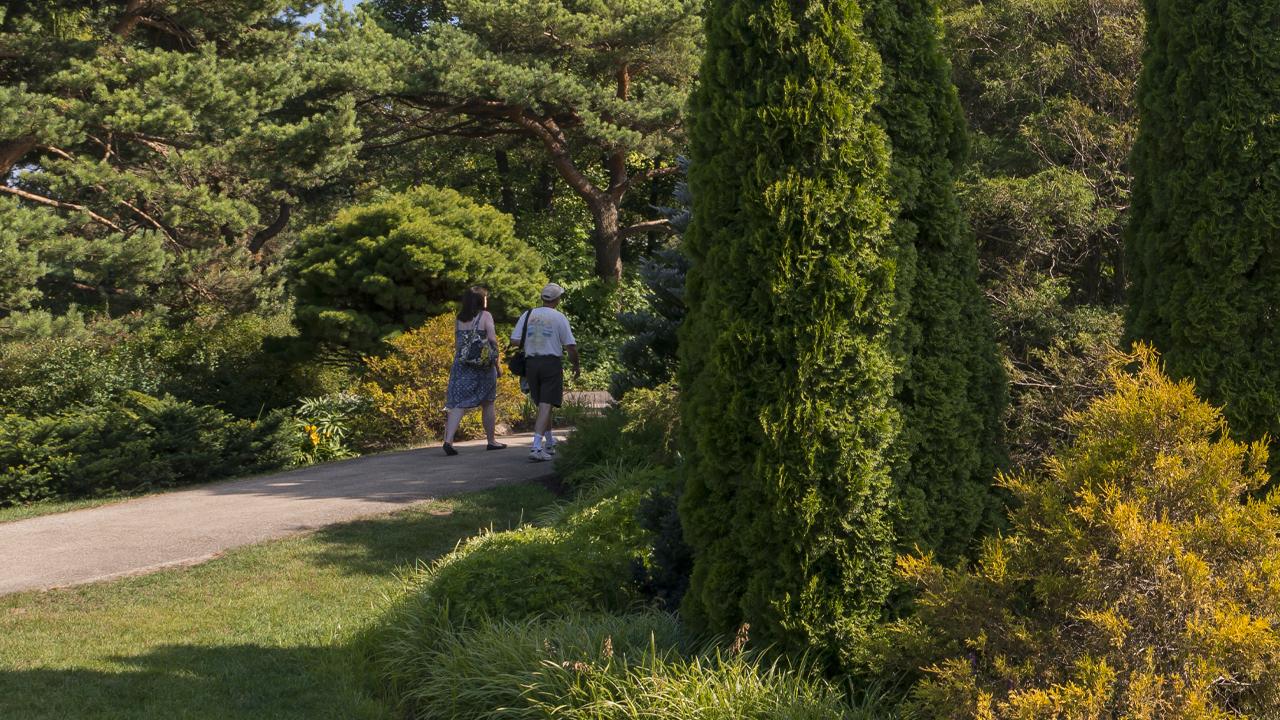

A Walk in the Dwarf Conifer Garden
A walk through the Dwarf Conifer Garden is truly a plant lover’s feast for the eyes.
It’s difficult to decide where to look next; what new magnificent specimens await behind the bend in the path, or tempt at the top of the steps. The garden is sited on a hill, where this fascinating group of plants known as dwarf conifers can receive the fast drainage they need to thrive. A series of accessible paths, a grand entrance stone staircase, stepping stone walkways, terraces, and swirling grass swards lead visitors up, down, and around the garden, with new vistas, views, and plant discoveries revealed at every turn, and at every level. For as the garden clearly demonstrates, not all dwarf conifers are found by looking down.
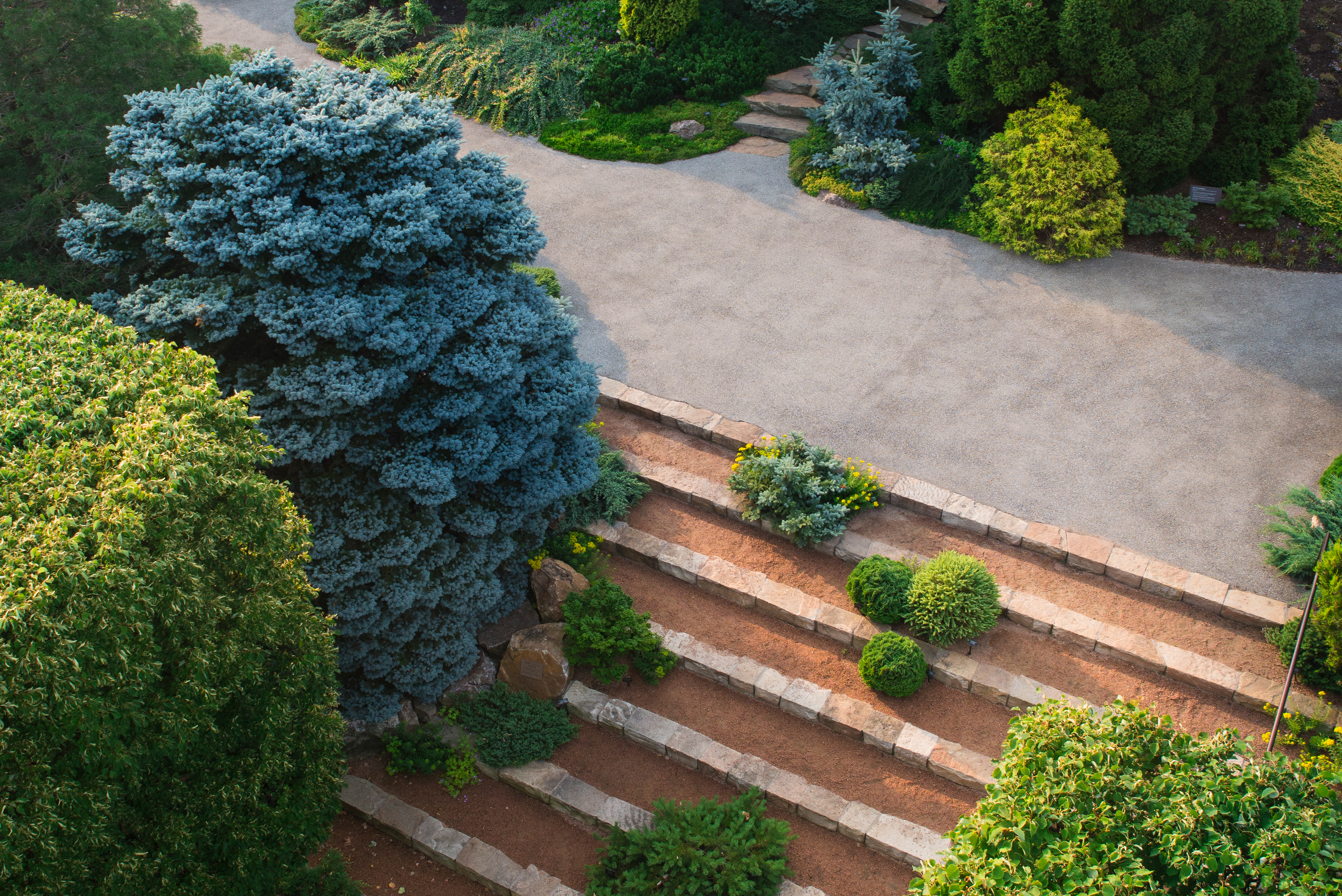
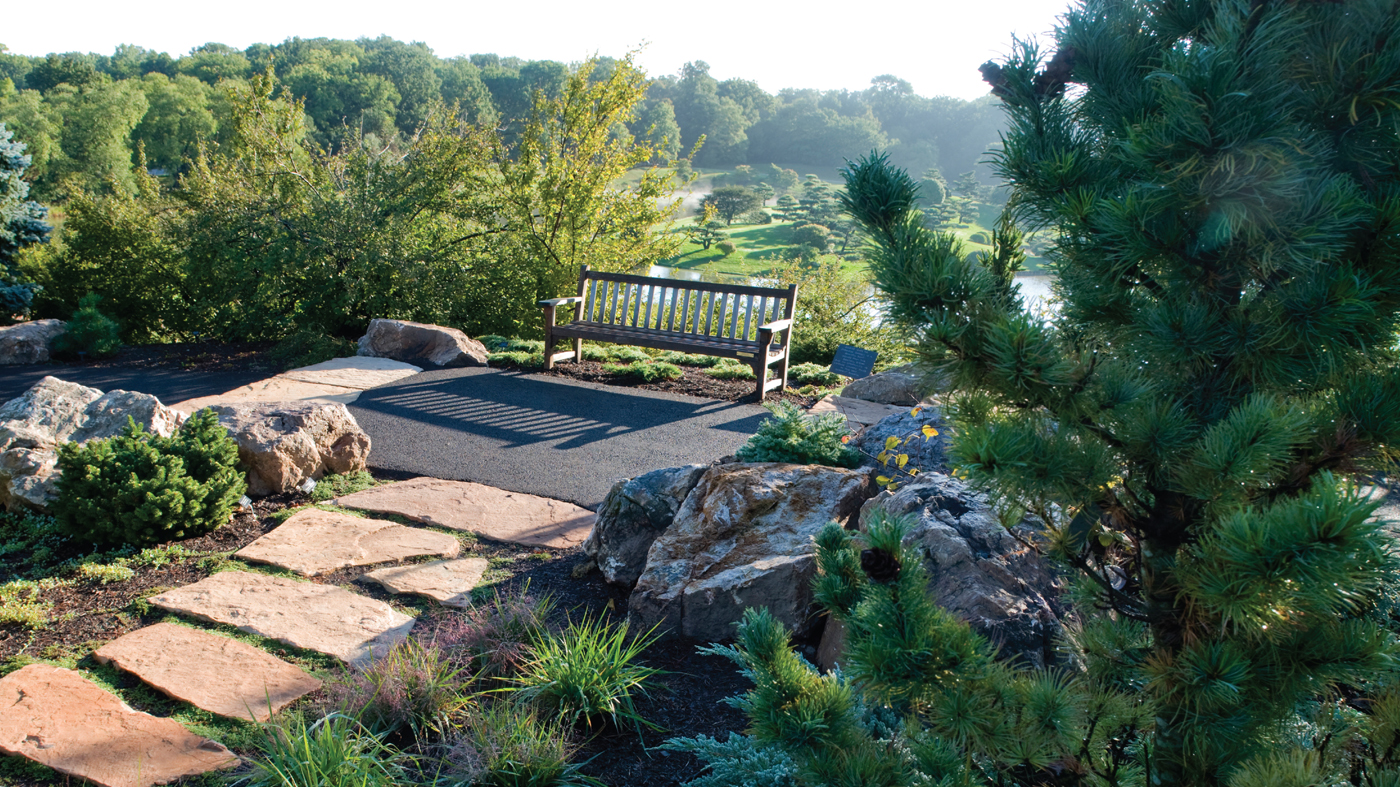
Advanced technique
The entrance to the garden welcomes you with grandeur — a staircase of pinkish white weathered sandstone slabs with crushed granite treads invites you to begin your walk, which will not only be an adventure in beauty, but a lesson in how to use these unusual plants in your own landscape. Conifers are native to northern lands, often mountainous or rocky, where soils can be sandy, with sharp drainage. The garden immediately conveys that sense of place, with boulders and huge stone slabs reminding us of their native habitats. The staircase, a case in point, features bright dwarf conifers as pocket plants, nestled into cutaways and corners of the steps, where they soften stone edges and bring brilliant color and texture to the rough façade. Look for Green Carpet Korean fir, Eastern arborvitae, Golden Mop Sawara false cypress, and Blue Carpet singleseed juniper. At the top of the steps are further examples of unique landscaping methods for the most miniature of dwarf conifers — this time, they are grouped into pleasing arrangements in containers fashioned from a stonelike, man-made material.
Explore the Dwarf Conifer Garden,
a true four-season garden.Come see what magic happens here the rest of the year, especially in winter.
Download a guide for the Dwarf Conifer Garden before you visit.
Considering dwarf conifers for your landscape? Read on or take a class.
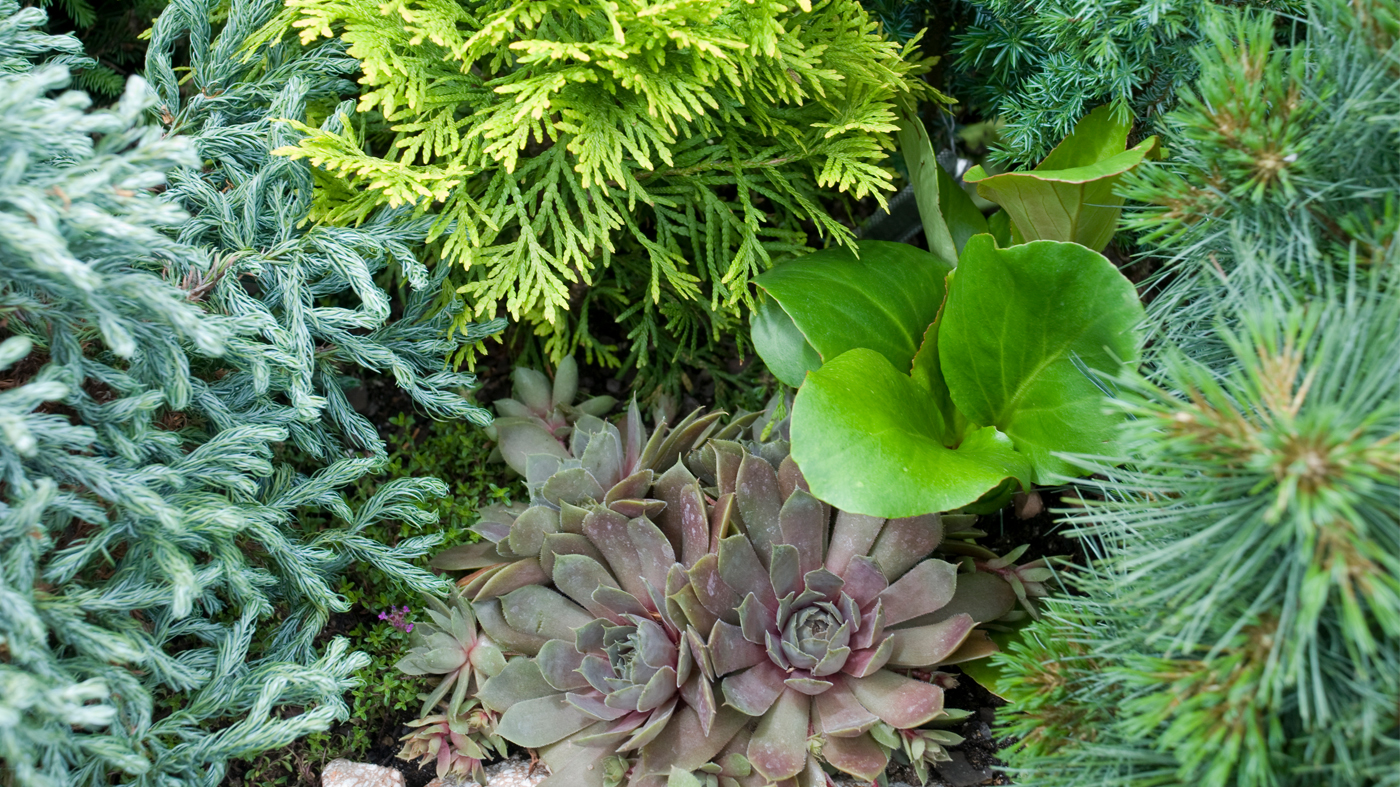
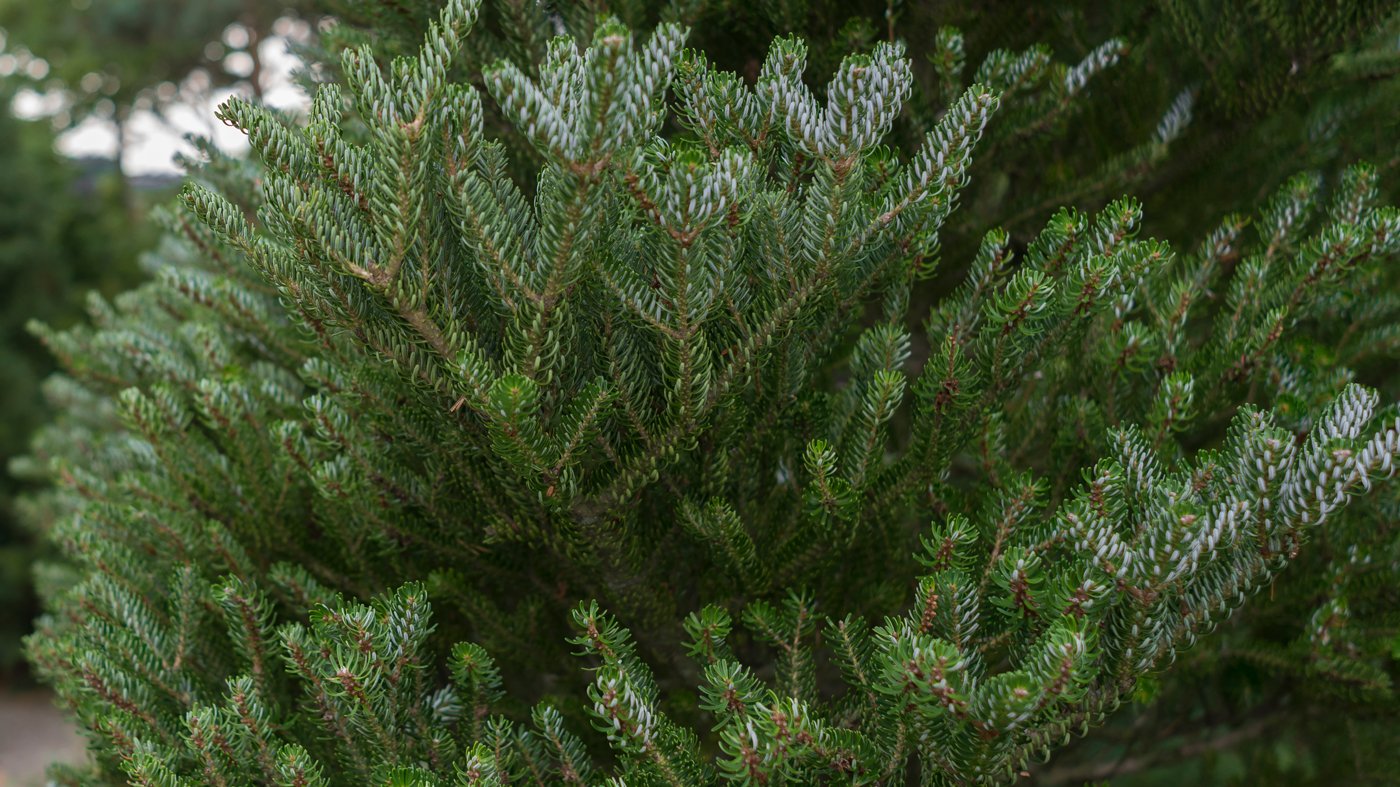
The American Conifer Society
The American Conifer Society provides four distinct categories for these versatile cone-bearing, (mostly) evergreen trees and shrubs. The categories are extremely important because they include annual growth rate and mature height after 10 years — crucial information for gardeners looking to integrate dwarf conifers into their own gardens. Miniature conifers grow less than 1 inch a year and are less than 1 foot after 10 years; dwarf conifers grow 1 to 6 inches a year and are 1 to 6 feet after 10 years; intermediate conifers grow 6 to 12 inches and are 6 to 15 feet after 10 years; and large conifers grow more than 12 inches a year and are taller than 15 feet after 10 years.
Knowing these numbers helps explain why the garden includes both colorful prostrate and mounding plants only inches tall, as well as towering conifers that fill the hill and dominate the higher elevation. Dwarf conifers are also known for the incredible variety of shapes they can assume. The chubby fingers of the weeping Norway spruce help to create a dense and formidable appearance, while the light and feathery European larch and Formosa juniper couldn’t be more texturally opposite. Notice the pressed flat needles of the Green Arrow Nootka false cypress and contrast them with the huge, long-needled spikes of two pines, the Jeffrey pine and the upright Bosnian pine. These needles call out to be touched very gently. Some conifers make their statements as vertical punctuation marks — see the emerald arborvitae or the columnar spruce. Others grow outward with open lateral branches, like the airy Yeddo spruce.
While noting the range of conifer habits, visitors can’t help but also notice their intriguing colors. Green is only one of the striking colors visible. Two-toned conifers are the stars of spring, when their soft new growth often emerges in a different color from the older needles. The bright yellow new growth of Brzeg English yew is almost blinding, while the silvery spring needles of the green Korean fir are most unique. The Atlantic white cedar sports red branchlets, fine green needles with creamy white new growth in spring. The hoary white fir has powder blue curling needles and the early growth of the lodgepole green pine is yellow! Cones are also colorful — look for red, purple, and green, and then watch to see what colors they turn into throughout the season.
A thorough complement of companion plantings accompany these beautiful dwarf conifers, giving home gardeners plenty to think about for their own gardens. From flowering shrubs to ornamental grasses, bulbs, ground covers, perennials, succulents, and even roses — the choice for what to plant with dwarf conifers is limited only by the cultural requirements of the plant in question. Most, but not all, conifers prefer full sun, good air circulation, and excellent drainage, and so should their plant partners. Note the use of blue, purple, burgundy, and silver as complementary colors to the conifers.

